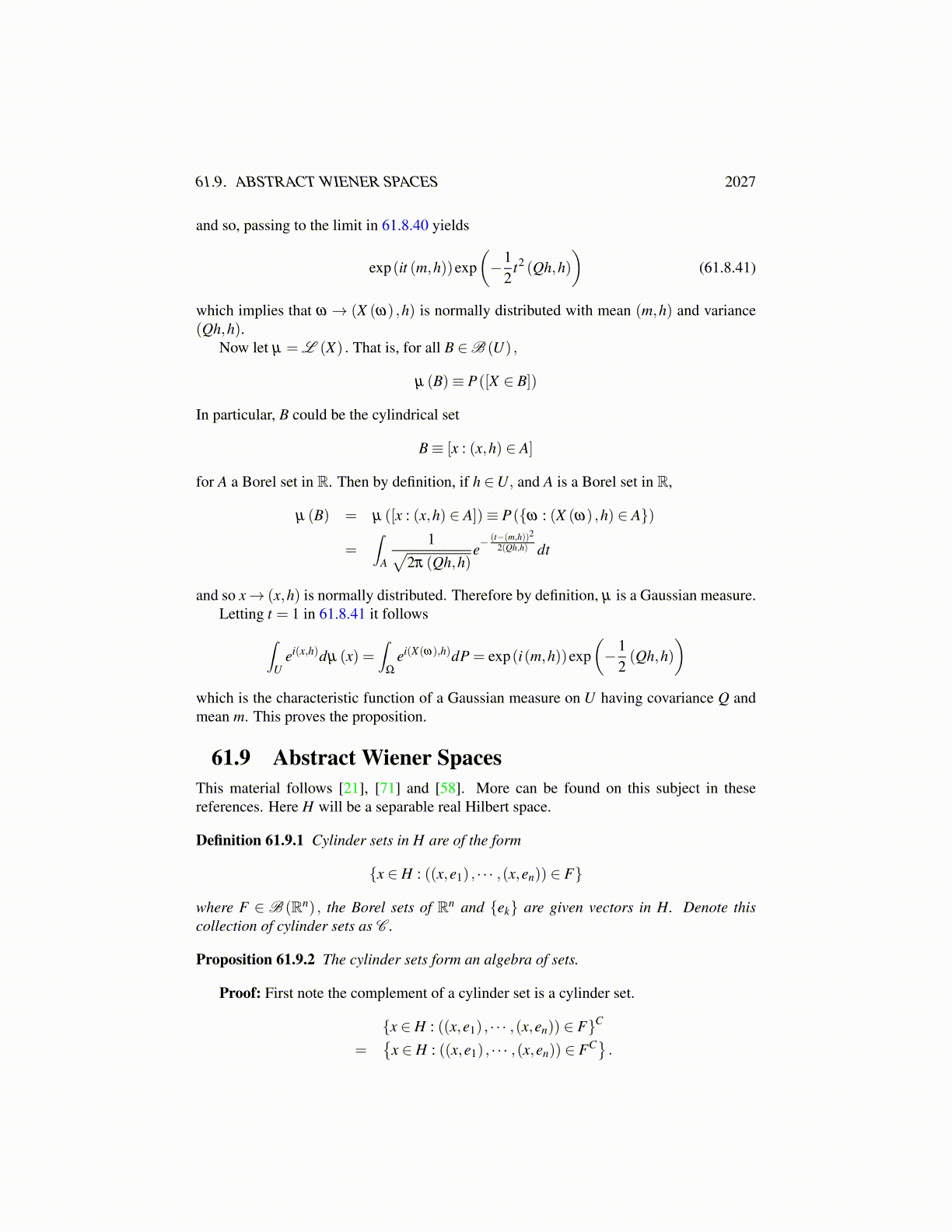
61.8. GAUSSIAN MEASURES FOR A SEPARABLE HILBERT SPACE 2027
Then from 61.8.38 it follows that for h ∈ A,
38=
78− 1
2≤ 7
8− 1
2(Qch,h)≤ e−
12 (Qh,h)
Therefore, for such h,83≥ e
12 (Qh,h) ≥ 1+
12(Qh,h)
and so for h ∈ A,
(Qh,h)≤(
83−1)
2 =103
Now let h be arbitrary. Then for each ε > 0
h
ε +√(Qch,h)
∈ A
and so (Q
(h
ε +√(Qch,h)
),
h
ε +√(Qch,h)
)≤ 10
3
which implies
(Qh,h)≤ 103
(ε +√(Qch,h)
)2
Since ε is arbitrary,
(Qh,h)≤ 103(Qch,h) . (61.8.39)
However, Qc has finite trace. To see this, let {ek} be an orthonormal basis in U . Then
∑k(Qcek,ek) = ∑
k
∫[||x−m||≤c]
|(x−m,ek)|2 dµ (x)
=∫[||x−m||≤c]
∑k|(x−m,ek)|2 dµ (x) =
∫[||x−m||≤c]
||x−m||2 dµ (x)≤ c2
It follows from 61.8.39 Q that Q must also have finite trace.That µ is uniquely determined by m and Q follows from Theorem 59.12.9. This proves
the theorem.Suppose you have a given Q having finite trace and m ∈U. Does there exist a Gaussian
measure on B (U) having these as the covariance and mean respectively?
Proposition 61.8.7 Let U be a real separable Hilbert space and let m∈U and Q be a pos-itive, symmetric operator defined on U which has finite trace. Then there exists a Gaussianmeasure with mean m and covariance Q.